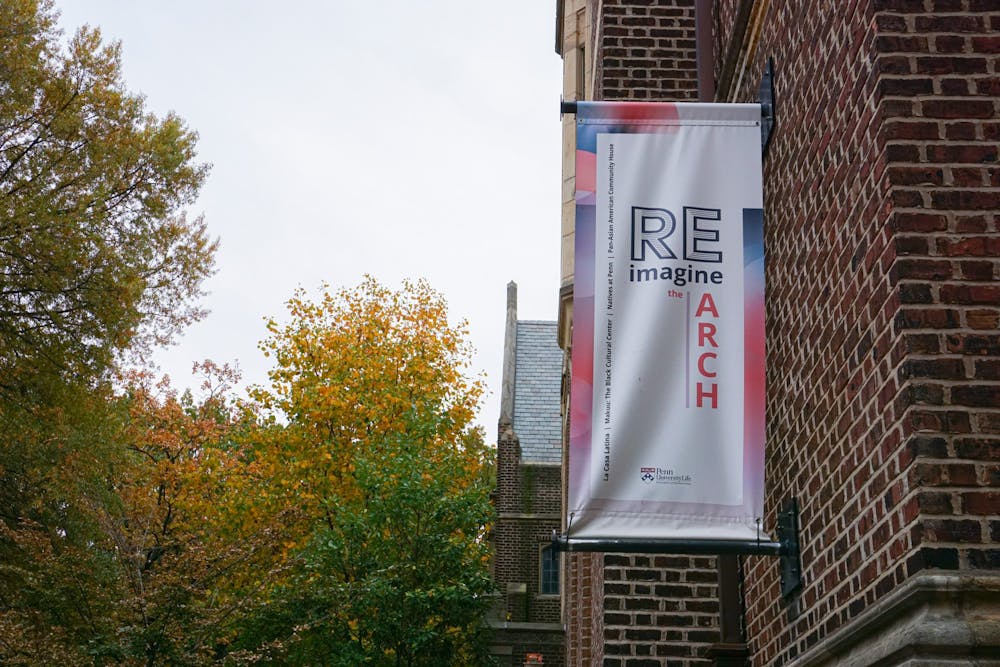Following the grand reopening of the Arts, Research, and Culture House this fall, the building is undergoing a second phase of renovations to enhance space for the cultural resource centers and minority groups at Penn.
The Penn community has provided feedback on the newly redesigned ARCH building dedicated to cultural centers and minority groups on campus. The second phase of renovations follows years of student advocacy driven by members of the 7B minority coalition and months of planning.
Administrators and students part of the ARCH steering committee told The Daily Pennsylvanian that there are new updates to the structural and operational functions of the redesigned building, including carving out a physical space for Natives at Penn.
In this new phase, NAP will be incorporated into the ARCH building while continuing to exist in a space in the Greenfield Intercultural Center.
Discussions are currently held to decide where NAP should be housed in the ARCH building, according to Associate Vice Provost for University Life Will Atkins. One location under consideration for this, which is currently being used by NAP, is on the ground level adjacent to the other cultural centers part of the Pan-Asian American Community House.
Prior to his sudden departure in September, PAACH Director Peter Van Do had offered for NAP to occupy space that was at the time occupied by PAACH, according to Atkins.
“Initially, the plan was for Natives at Penn to have the space in the garden [ground] level. Now, how that's being actualized, that's a different conversation that we're having with the students, and we may readjust and realign some of those ideas,” Atkins said.
In a statement to the DP, NAP's board wrote that “NAP is grateful to PAACH for giving us space so that we can be included among the other cultural resource centers and student groups.”
RELATED:
Penn dedicates ARCH building to cultural centers after decades of student advocacy
Director of PAACH suddenly leaves Penn after 10 years in position
It also highlighted the group's efforts to increase native and indigenous visibility on campus and interaction with other minority coalitions at Penn. To this end, NAP kicked off Native Heritage Month with a mixer held on Nov. 1, inviting members of the 7B cultural coalition groups.
“We hope to continue furthering our relationships with the other student groups and cultural resource centers that are located in ARCH,” the board wrote.
Students can also expect the transformation of the front desk area on the first floor of ARCH into a resource library with books and more space dedicated to students.
On the same floor, renovations will separate ARCH rooms 108 and 109 so that the two rooms can be used for different events simultaneously. Currently, students need to go through ARCH 108 in order to access ARCH 109.
Although there are kitchens and kitchenettes located throughout the building, student members of the steering committee expressed their desire for a larger community kitchen.
“[Administators and students] are trying to look at food access that connects to the center and program in some way,” Assistant Vice Provost for Strategic Planning and Operations Laurie Hall said.
College sophomore and Internal Chair of the Latinx Coalition Elizabeth Ramos, who is a part of one of three sub-groups in the steering committee, said she went back to her constituency to consult on how space in ARCH should be utilized. She emphasized the students' role in the committee to listen "to our communities to survey what the best use of the space is.”
Hall said that the prioritization of minority student groups for use of ARCH building facilities has proven effective and that there was a noticeable change in the demographic that hosts events in the ARCH space. Affiliates of the cultural resource centers and Penn’s main minority coalition represented 90% of the events in the ARCH building versus 60% of events without the model, according to Hall.
Hall and Atkins said that they encourage students to continue to provide feedback about the ARCH building to the University Life team.
“[This] phase is to continue to understand the feel of the space and to be able to make it feel like home," Atkins said.









